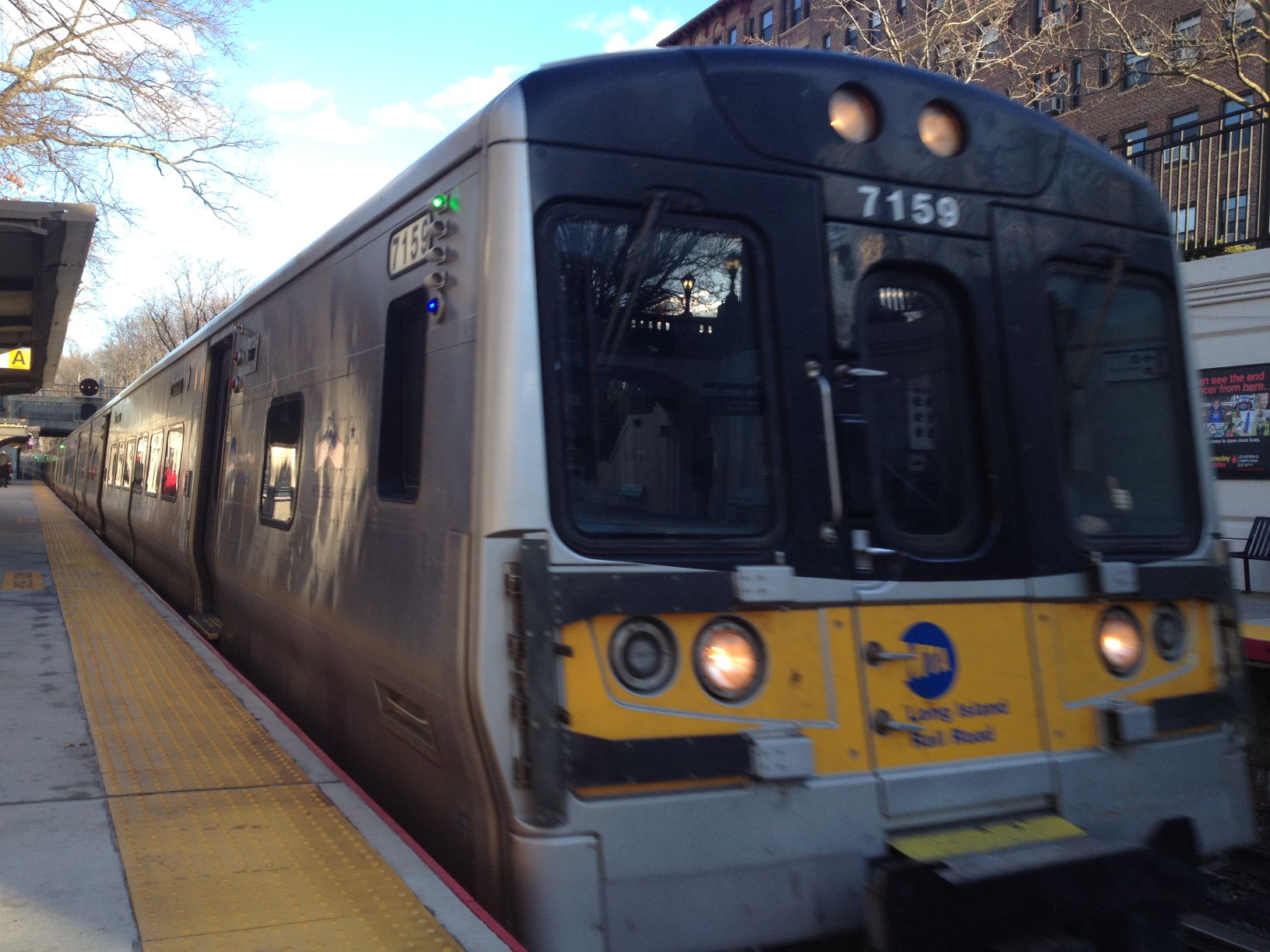As engineers came on board to study Gov. Andrew Cuomo’s proposal for a third track along 9.8 miles of the Long Island Rail Road, state and transit officials met with local leaders to pitch plans for eliminating street-level railroad crossings.
Representatives from the state transportation department and the Metropolitan Transportation Authority have presented concepts for eliminating the seven grade crossings along the stretch of the LIRR’s Main Line to officials from villages where the crossings lie.
Transportation engineers had about eight proposals to remove Mineola’s grade crossings at Willis Avenue and Main Street, but did not let Mayor Scott Strauss keep copies of the plans, he said.
“They wanted me to whittle away in an hour or two hours what is good and what is bad,” Strauss said. “That’s not going to happen.”
Cuomo spokeswoman Beth DeFalco declined to comment on specific meetings.
Strauss said officials did not allow him to keep the conceptual plans because they did not want them to become public yet.
Village of New Hyde Park Mayor Robert Lofaro said last week that he and Deputy Mayor Lawrence Montreuil were set to discuss grade crossing plans with MTA and state officials Tuesday afternoon.
Lofaro could not be reached to discuss the meeting on Tuesday evening, but he previously said he planned to get feedback from residents on the proposals they presented.
Strauss said he gives the state “kudos” for reaching out to villages, but the fact that planners are not being “forthcoming with the information” is frustrating.
“This is a massive, massive thing that’s going to happen if it happens,” Strauss said. “Why would I not encourage others to give their opinions?”
The meetings come as Cuomo and the MTA this week announced the hiring of two engineering firms to conduct an environmental review of the plan to add a third track to the LIRR’s Main Line between Floral Park and Hicksville.
In a “joint venture,” Pennsylvania-based Gannett Fleming and Los Angeles-based AECOM will handle the environmental study, public outreach and preliminary engineering for the project under a $6.95 million contract, the MTA announced Tuesday.
Both firms have “vast experience in conducting in-depth and accelerated reviews,” the transportation authority said in a news release. Money from the MTA’s 2005-2009 Capital Program will fund the study.
“This is an important step forward in this project, which is so critical to the future of Long Island residents and the region’s economy,” Cuomo said in a statement. “Earlier this year, I promised that we would engage with the community at an unprecedented level and use the environmental review process to mitigate adverse impacts on the local communities in every way possible. This project will not only improve commutes but also reduce traffic congestion and strengthen the environment by getting more Long Islanders out of their cars.”
The two firms will work with communities to develop plans for the grade crossing eliminations, the MTA said, which will increase safety and reduce the amount of noise from train horns.
DeFalco has said the overall outreach process for the third track project will set a “new standard on Long Island” and include in-person conversations with residents and a website with direct access to project planners, she has said.
Cuomo also announced in March that the project, estimated to take five years to build, would not require any residential property acquisitions.
Village of Floral Park Mayor Thomas Tweedy said he appreciates the outreach that’s occurred so far, but Cuomo and the MTA have yet to show how the third track would benefit his village.
Officials in affected villages remain concerned about how construction and the finished project would impact businesses, residents and their quality of life.
“We’re not trying to not comply with the governor,” he said. “… We’ll try to work with him and we’ll be more than happy to do that, but again, our cooperation is not consent.”
Cuomo announced his plans for a third track in January and has since tried to distinguish his project as a slimmed-down, less intrusive version of the plans the MTA abandoned in 2008.
Unlike that project, the new plan would be built entirely within the LIRR’s right of way and therefore require fewer property acquisitions and have a smaller construction impact.
Third track proponents say the project would ease east- and westbound commutes, improve LIRR service, add billions of dollars to Long Island’s economy and attract thousands of new residents.
Village officials and residents along the Main Line have remained opposed to the project, saying their communities would bear all the burden of construction without reaping any of its stated benefits.
Coalitions have formed on both sides of the debate.
Floral Park-based Citizens Against Rail Expansion helped derail the third track before and currently has the support of village officials, chambers of commerce and other community organizations.
Cuomo and the Long Island Association business group announced last month their Right Track for Long Island coalition of corporations, universities, research institutions, non-profits, individuals and other supporting the project.



